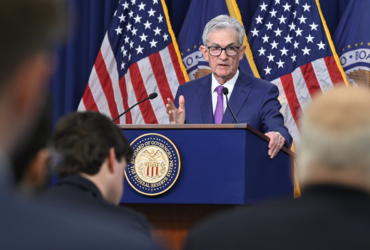Inflationary pressures are heating up, and the latest Consumer Price Index (CPI) report for March has sent shockwaves through economic circles. The data revealed a 0.4% increase in prices, matching the previous month’s surge. This uptick pushed the year-over-year index to 3.5%, a significant jump from February’s 3.2% and marking the highest level since September 2023. Notably, these figures exceeded economists’ expectations, who had anticipated a more modest 0.3% rise for the month, with the annual index rising to 3.4%.
Delving deeper into the data, we see mixed trends across various sectors. Food prices experienced a minimal increase of just 0.1% in March, maintaining the year-over-year index at 2.2%. Conversely, energy prices saw a notable uptick, rising by 1.1% for the month, albeit down from February’s 2.3% surge. Nonetheless, it marked the second-highest increase in the past six months. Importantly, the annual energy index returned to positive territory for the first time in 13 months, with prices up by 2.1% year-over-year.
Core inflation, which excludes volatile food and energy prices, also surprised on the upside. Prices surged by 0.4% in March, matching the overall inflation rate, while the annual index remained stubbornly high at 3.8%. Economists had predicted a more moderate 0.3% rise, with the annual index slowing to 3.7%. The persistent strength in core inflation underscores the underlying inflationary pressures present in the economy.
However, one notable drag on core inflation continues to be the housing sector. The shelter index held steady at 5.7% year-over-year, accounting for over sixty percent of the total 12-month increase in the all items less food and energy index. This indicates that housing costs remain a significant driver of inflationary pressures.
The implications of rising inflation extend beyond just consumer prices; they also have ramifications for monetary policy. In recent months, there had been speculation that the Federal Reserve might consider cutting interest rates three times this year to support economic growth. However, the surge in inflation witnessed in March dampens the likelihood of such aggressive rate cuts.
The Federal Reserve closely monitors inflation trends as part of its mandate to maintain price stability and maximize employment. While the Fed has indicated its willingness to tolerate temporary inflation overshoots, sustained high inflation could prompt a reassessment of monetary policy.
The resurgence of mortgage rates further underscores the challenges in the housing market. The 10-year Treasury yield, a key benchmark for mortgage rates, jumped back above 4.5% for the first time since November. This signals ongoing affordability concerns in housing, which could exacerbate inflationary pressures in the coming months.
The March inflation report paints a picture of mounting inflationary pressures, surpassing economists’ expectations and challenging the notion of aggressive rate cuts by the Federal Reserve. With core inflation remaining elevated and housing costs continuing to weigh on price dynamics, policymakers will likely tread cautiously in their efforts to balance inflation control with supporting economic growth.





